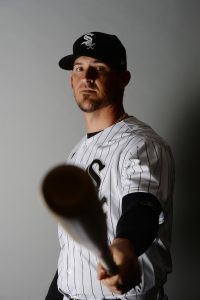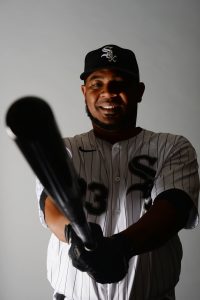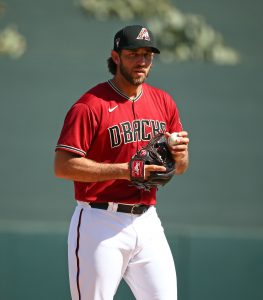The Orioles kept pretty quiet again this winter. They added a couple veteran stopgaps to temper the timelines of their young players. They also lost two Baltimore mainstays: Dylan Bundy and Mark Trumbo – both of whom had been with the big league club since 2016. Chris Davis and Mychal Givens are the only players left on the roster who have seen postseason action in an Orioles’ uniform.
Guaranteed Contracts
- Jose Iglesias, SS: one-year, $3MM (includes $3.5MM club option for 2021)
- Kohl Stewart, RHP: one-year, $800K if he stays in majors
- Total spend: $3.8MM
Trades and Claims
- Traded RHP Dylan Bundy to Angels for RHP Isaac Mattson, RHP Zach Peek, RHP Kyle Brnovich and RHP Kyle Bradish
- Traded IF Jonathan Villar to Marlins for LHP Easton Lucas
- Claimed RHP Hector Velazquez off waivers from Red Sox
- Claimed IF Andrew Velazquez off waivers from Indians
- Claimed IF Ramon Urias off waivers from Cardinals
- Claimed RHP Travis Lakins off waivers from Cubs
- Claimed IF Pat Valaika off waivers from Diamondbacks
- Claimed IF Richard Urena off waivers from Blue Jays
Notable Minor League Signings
Notable Losses
The Orioles are an interesting team from a short-season perspective. They don’t have the depth to compete over a full slate of 162 ballgames, but in some bizarro post-coronavirus tournament? They’re still probably not competitors – but they could be peskier than most suspect. Then again, that goes for all potential cellar-dwellers.
Specific to the Orioles, GM Mike Elias made clear early in the offseason what his priority number one would be: pitching depth. Elias found himself repeatedly scouring other organizations in 2019 for low-cost pitching to stanch the bleeding, and he didn’t want the O’s to be in that position again. Rushing minor-league talent to fill the void is not a palatable option for Elias. His offseason focus wasn’t so much about building a talent base in the majors as it was about protecting the future talent from the ill effects of hurried development. In that very-limited scope, Elias’ plan is sound. So while fans might not get goose bumps over the Orioles’ new arms, in this context, Tommy Milone and Wade LeBlanc are legitimate gets.
Milone has pitched in the majors in every season since 2011, and he very well might lead the majors in earned travel miles over that span. After making his debut with the Nationals, Milone pitched for the A’s for 2 1/2 years and Twins for 2 1/2 years, ably filling a rotation slot with a 4.14 ERA/4.36 FIP. 2017 was less kind as he produced lackluster results with the Brewers and Mets before taking a second turn with the Nats in 2018. Last season, however, Milone turned back the clock a tad, providing 111 2/3 innings of 4.76 ERA/5.00 FIP ball for the Mariners. Similar production would suit the Orioles’ needs just fine in 2020, especially under the conditions of a shortened season. It’s pretty darn close to a lateral move from, say, Aaron Brooks, one of last season’s stopgaps, but important nonetheless for the pitching-poor Orioles.
LeBlanc has a longer track record, but of similar shape and sound to Milone’s career. LeBlanc started his career with the Padres from 2008 to 2011. From there he went to the Marlins to the Astros, before boomeranging in 2014 from the Angels to the Yankees and back to the Angels again in the span of the 2014 season. He missed all of 2015, rehabbed with the Blue Jays’ Triple-A team in 2016 before reappearing in the majors for the Mariners and Pirates. “Boomerang” LeBlanc returned to the Mariners in 2018, where he enjoyed a semblance of stability for a pair of seasons, going 15-12 with a 4.57 ERA/4.80 FIP across 283 1/3 innings.
No, LeBlanc, 35, and Milone, 33, aren’t the same pitcher, but you’d be forgiven for getting them confused. 4.46 ERA to 4.47 ERA, 4.68 FIP to 4.58 FIP, 6.6 K/9 to 6.7 K/9. Both are among the absolute softest-tossers in the league, with Milone’s fastball averaging 87.1 mph, while LeBlanc, according to Statcast, has a “heater” that averages 86.3 mph (though he only throws it 5.7% of the time). Here’s a fun fact: LeBlanc appears in the 0th percentile for fastball velocity. Call it a case of baseball rubbernecking, but I personally would love to see a rotation with Milone, LeBlanc, and John Means, whose 91.7 mph fastball may look downright Johnsonian in comparison.
Whether either or both makes the team, let alone the rotation, is still very much in doubt (before the coronavirus craziness, MASN’s Roch Kubatko thought LeBlanc a lock to make the roster). Fellow newcomer Kohl Stewart might be a safer bet to line up behind Means, Alex Cobb and Asher Wojciechowski – though not because of his track record. Stewart comes from sturdier prospect stock as the fourth overall pick of the 2013 draft, and he’s still just 25-years-old. He arrives in Baltimore with just 62 big league innings and a matching 4.79 ERA/FIP.
On paper, Stewart is a fine low-cost gamble for a team like the Orioles, but whether or not he’s actually worth a look will depend on what the Orioles see in him that the Twins did not. If it’s just a paper gambit, there’s not a ton in Stewart’s recent history to get all that excited about – not with just 1.31 K/BB and a long list of injuries that have sapped him of his once-strong potential. But if they can improve his pitch sequencing, there may still exist some version of top-prospect Stewart to unearth. On the whole, these arms (Milone, LeBlanc, Stewart) were brought in specifically to keep younger arms out of the fire, but if/when the O’s tire of this approach, they have a number of hurlers in the upper minors to keep on your rookie radar.
On the offensive end, the most obvious plus from the 2019 season hit the most worrying snag possible: Trey Mancini doesn’t expect to play baseball in 2020, not after a Stage III Colon Cancer diagnosis. Read his piece in the Players’ Tribune, however, and you’ll be more encouraged about Baltimore baseball than before. Mancini hit .291/.364/.535 with 35 home runs, 106 runs and 97 RBIs in 2019. His 3.5 bWAR/3.6 fWAR (132 wRC+) places him in legitimate All-Star territory, even if that distinction was bestowed upon Means in 2019. If there’s baseball in 2020, Mancini will be missed.
But if Mancini can find the silver lining in his diagnosis, we can find it for the on-field Orioles. Playing time is a limited commodity – more so in 2020 than usual – and Mancini’s absence means ample opportunities for other Orioles to establish their credibility. Our own George Miller wrote about Anthony Santander as a potential breakout candidate, and he might be the most direct beneficiary of Mancini’s absence. But waiver claims like Pat Valaika or Andrew Velazquez could see the trickle down effect while coming off the bench. Velazquez, in particular, impressed manager Brandon Hyde and his staff this spring. DJ Stewart is another candidate to see time keeping Mancini’s spot warm, along with Dwight Smith Jr., Cedric Mullins, Ryan McKenna or Yusniel Diaz.
Ryan Mountcastle could also eventually make the big league club and see time either at first, third, DH, or the outfield. Mountcastle is in the conversation as the best power hitter in the Orioles’ system, and he might be the first of a new wave of Orioles’ prospects to get excited about. He just needs a defensive position.
On the dirt, the Orioles should feature a mostly new middle infield. Richie Martin and Jonathan Villar saw the most time up the middle in 2019. Villar finds himself in a Marlins’ uniform these days, while Martin will have to earn his keep to stay on the major league roster. Last year’s Rule 5 selection could use seasoning time in the minors, though he will compete for a roster spot. Moving on from Villar was somewhat surprising, even if his price tag was getting a little high ($8.2MM in 2020). It’s not as if the Orioles have a ton of financial commitments on the roster, and he’d been a rare plus on the offensive end (107 wRC+). Still, he has just one season left of control, and there might not have been much action on the trade market. Elias did well to at least get something in return for Villar, though Easton, a 23-year-old 14th-round draft pick from 2019, does feel like a light return.
In their stead, Jose Iglesias and Hanser Alberto figure to get most of the playing time up the middle. Iglesias brings a steady glove and consistent major league production to a lineup sorely lacking in veteran experience. But he’s also a textbook second division starter, never having produced more than 2.5 bWAR in a single season, and just as often coming up shy of the 2.0 bWAR mark. Still, his glove should help.
Alberto hit .305/.329/.422 last season, a breakout of sorts of the versatile infielder. Parts of three previous seasons with the Rangers produced a mere .192/.210/.231 line. Even the current version of Alberto isn’t a clear plus on that end (96 wRC+), not with a 2.9% BB%, even if he does put the ball in play (9.1% K%).
Alberto and Iglesias don’t have a real firm hold on their positions atop the depth chart (although it’s not as if Ramon Urias, Dilson Herrera, Stevie Wilkerson and Jose Rondon are beating the door down). Velazquez may steal some at-bats, though like Alberto, he can move around the diamond, and there’s probably room for both in 2020. Richard Urena – a waiver claim from the Blue Jays – is a semi-interesting name to keep in mind. He didn’t impress enough over his time in Toronto to keep a 40-man spot, and most of the buzz around him comes from his strong showings in rookie ball. But if the switch-hitting infielder were ever to walk at the rate he did back then, he could develop into a useful bat as he enters his prime years. For now, however, he’ll start the year with Triple-A Norfolk.
Lastly, the Orioles said goodbye to Mark Trumbo and Dylan Bundy, two of their longest-tenured players. Trumbo and the Orioles had some good times, but health issues and too much of an all-or-nothing approach limited his utility. Orioles fans can look back fondly on his first year in orange and black, however, when Trumbo hit .256/.316/.533 as the AL’s home run king. He slugged 47 long balls in 2016 as a big part of that Wild Card team. Unfortunately for both team and player, Trumbo came nowhere close to repeating that production in the three years since (.242/.295/.413 with 40 home runs across 992 plate appearances). Trumbo appeared in just 12 games in 2019. At 34-years-old, there’s a decent chance he’s played his last game in the majors.
Bundy was a much-heralded prospect coming up, appearing for the first time for two appearances as a 19-year-old way back in 2012. He didn’t reappear in the majors until 2016, and he never quite took off. He finished his Baltimore career with a 38-45 record across 127 games with a 4.67 ERA/4.75 FIP. Still just 27-years-old, Bundy will look to join a long list of former Orioles to find their groove elsewhere. Elias sent Bundy to the Angels for four pitchers. None are huge prospects, with Kyle Bradish the highest ranked, landing as the Orioles #22 prospect (per Fangraphs). Isaac Mattson lands at #31, Zach Peek at #37, while Kyle Brnovich does not rank. There’s not an obvious star there, but the Orioles need prospects of all shapes and sizes, and there’s something to be said for returning three ranked arms and a flyer for a back-end starter (*though not all outlets include the four on the O’s top-30 prospects list).
2020 Outlook
For those not paying attention, you might assume the Orioles were the worst team in baseball again in 2019. But the Tigers swooped in and took that title, leaving the 108-loss Orioles without a distinction on which to hang their hats. It’s not as flashy, but we’ll give them this: the Orioles had the 4th largest year-over-year improvement from 2018 to 2019 in the American League. Their 7-win improvement (from 47 to 54 wins) outpaced all but the Twins, White Sox, and Rangers in that department. If Manager Brandon Hyde can just quadruple that feat in 2020, why, they’d be over .500. More likely, the Orioles are ticketed for a fourth consecutive season in the AL East basement.
How would you grade the Orioles’ offseason moves? (Link for app users.)


